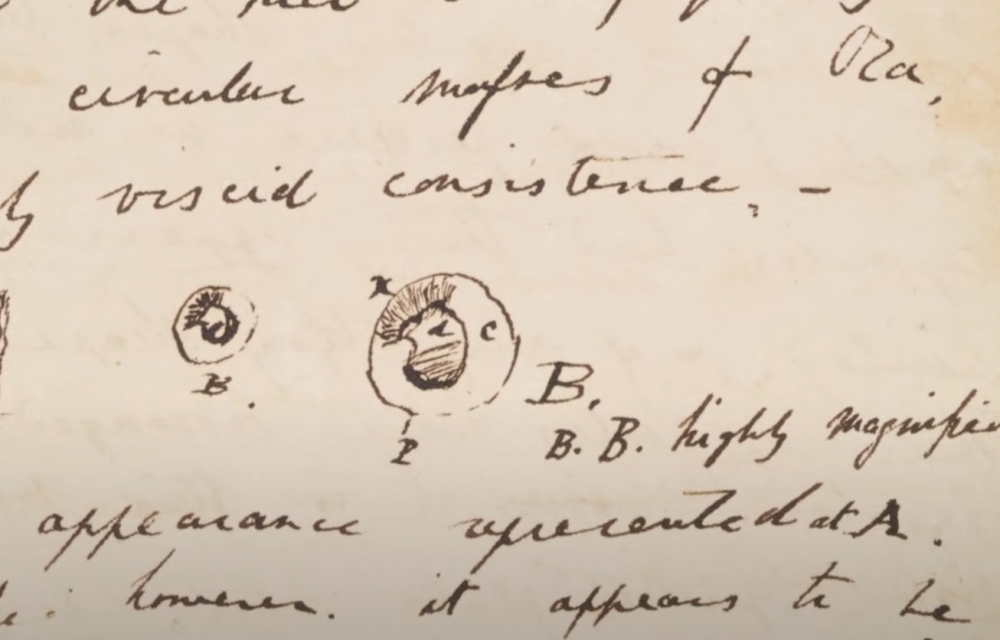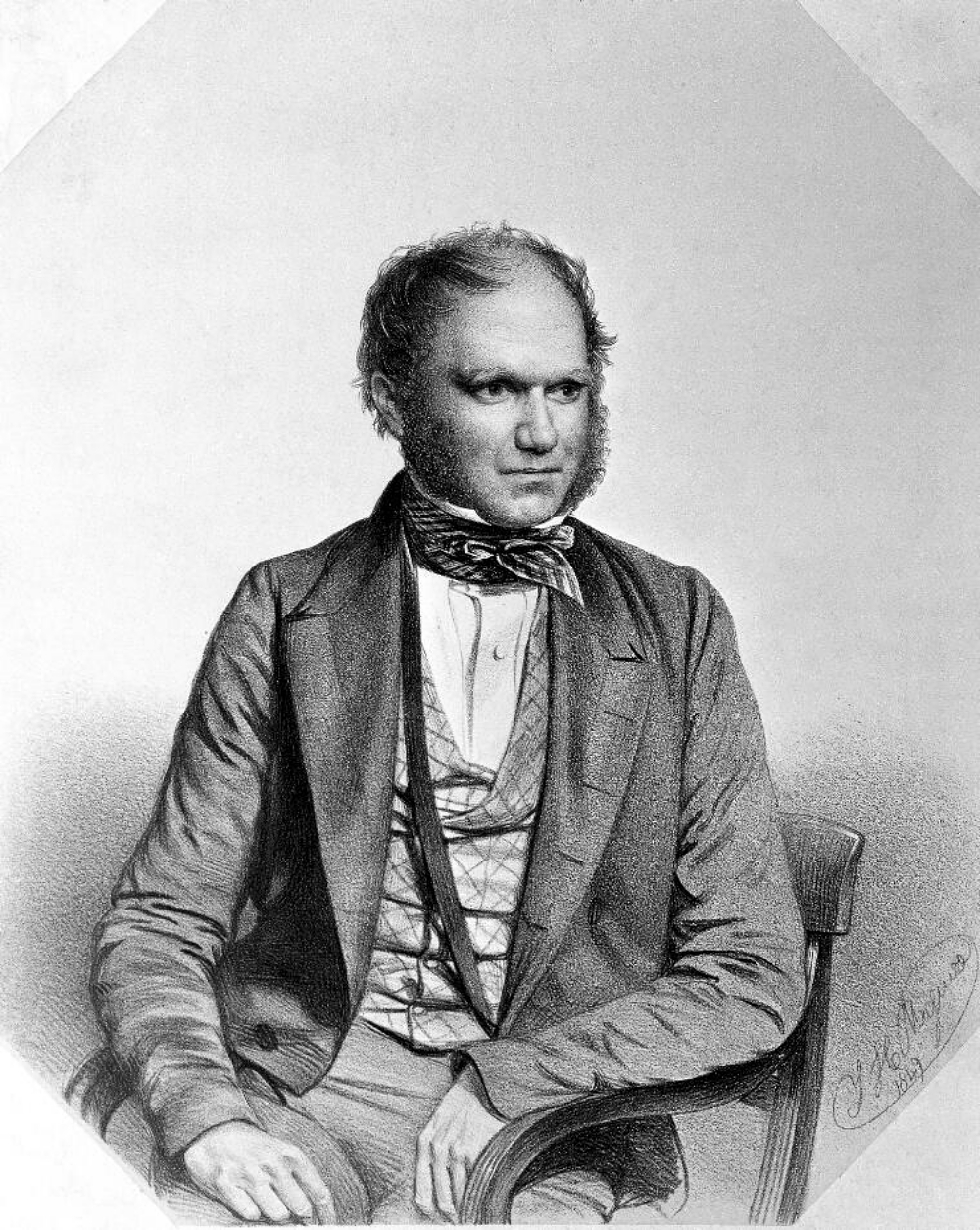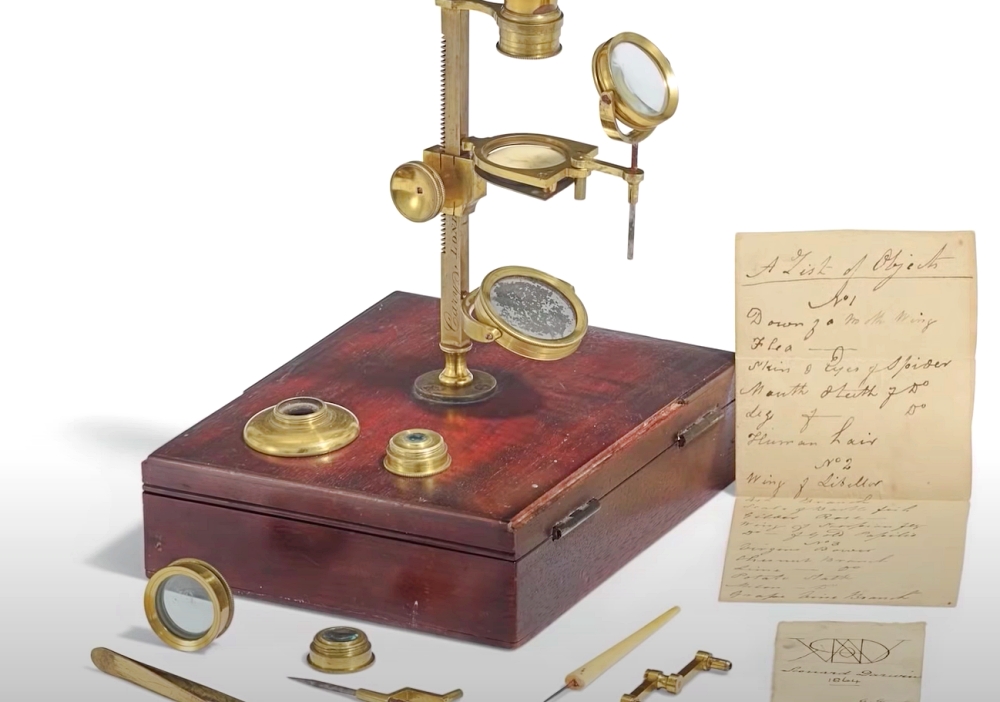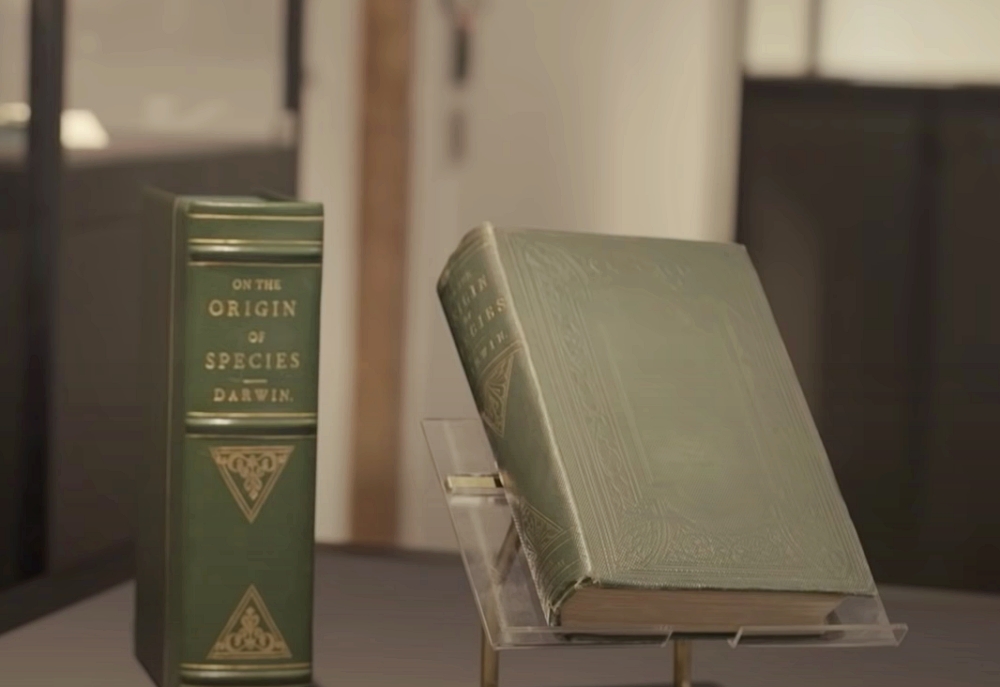Charles Darwin’s Microscope Sold for $800K at Auction
The family also let go of some other important artifacts as well.
Charles Darwin is known today as the father of the theory of evolution. His observations of animals, along with his detailed illustrations that showed the specialized features of various species, cemented his place in scientific history. While his pen and paper were his chief tools in his studies, he also used his brass microscope extensively to study down to the finest filament the adaptations that different animals had. Now, his first microscope has just sold at auction for big money.

His great-great-grandson, Andrew Darwin, remembered well the conversation he had with his father in the early 1990s about a wooden box that had been passed down through the family. When the box was opened again in 2021 he knew immediately that this was the famed microscope that he’d heard about. Charles Darwin gave the piece to his son, Leonard, when he was just a child. From there it passed on to other members of the family.
The model of the item is a Gould-type pocket microscope made by Cary in London, and it compacts to mere inches when disassembled and placed into its case. The maker’s name is engraved on the adjustable neck of the brass instrument. At the time it was produced (between 1826 and 1830) Charles Darwin was just about to set sail aboard the HMS Beagle that would take him to South America where he would chart the evolution of the animals of the Galapagos Islands.

Throughout his lifetime Darwin is thought to have owned between 10 and 15 microscopes, of which only a half dozen are known today. This traveling microscope is the earliest example attributed to the groundbreaking scientist and came complete with a mahogany case lined in green velvet. A small box for live insects, an ivory-handled dissection tool, and a pair of forceps were also included with the microscope, as well as other accessories.
The microscope sold at auction from Christie’s on December 15th, 2021, for £598,500 (including fees) which is around $803,274 US. Prior to the auction the instrument was estimated to sell for between £250,000 and £350,000.
The sale marks not only the first Charles Darwin microscope to have been sold at auction, but also marks the highest amount paid for a 19th century microscope.

James Hyslop, head of science and natural history at Christie’s, said in an interview for The Guardian that it was likely to be put on public view- regardless of who bought it. He said, “My experience with objects like this is if it sells to a private collector they would want to share it with the world.”
There were 11 other items from the Charles Darwin family archive that sold around the same time, including a first edition of his book, On the Origin of Species by Means of Natural Selection and letters he penned pertaining to natural history. The items were sold as part of the Valuable Books and Manuscripts auction.

You can see more about this fascinating piece (and the auction) in the video below.
SKM: below-content placeholderWhizzco for DOT

